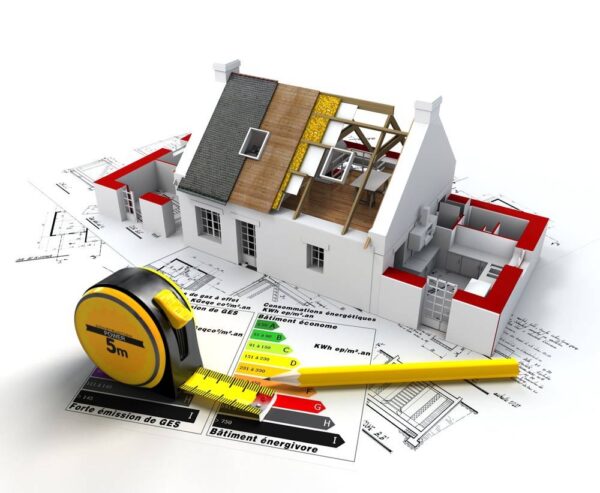Have you about to start a new dwelling build? The you need to ensure you pass your SAP Assessment and comply with your planning and building control requirements.
To try and help our clients, we have written our top 10 tips on how to pass your SAP calculation at the first attempt.
The SAP (Standard Assessment Procedure) is the means by which the Government assesses and compares the energy and environmental performance of different dwellings. The SAP rating measures a score rating from 100 points and is necessary for anyone working on new residential developments, conversions and even some extensions and refurbishments.
The results of the SAP produce your Predicted Energy Assessment and your Construction Energy Performance Certificate (EPC)
So, how can you pass your SAP assessment first time?
Like many people, you have probably visited this article, because you aren’t sure where to start. Luckily, that’s where we can help. APT has undertaken hundreds of SAP Assessments (residential) and SBEM Assessments (commercial) on all types of projects. We try and help clients achieve their sustainability and compliance targets with minimal stress.
To help guide you on the road sustainability compliance, please see our top 10 tips for passing your SAP assessment.
- Commence your SAP as early as possible – Don’t wait until it’s too late; get the SAP assessment started as early as possible in your design process and make your life easier, so you’ll have to choose from in order to prove compliance with building regulations. In our experience you can save major costs if you get the design correct from the beginning, rather than retrospective improvements which are both time, labour, and cost intensive.
- Make sure you have a high spec building fabric – the majority of heat loss in dwellings comes through the fabric of the build. The building fabric means the floor, walls, and ceiling/roof. You can minimise this by lowering your u-value.
- Choose high spec thermal windows – windows with a high thermal specification are designed to keep a dwelling warmer in the winter and cooler in the summer. A good quality window can block up to 75% of solar gain, as well as radiating heat back into the building during cooler months.
- Ensure your building has airtightness rating – the more airtight a building, the better it will usually perform thermally. All new building should be looking an air leakage performance of below 5m3/hr/m2. Airtightness can have a considerable improvement to your SAP score – either for new build or refurbishment projects. Discover more about the key areas of airtightness.
- Use low energy lighting – As a minimum, a new build requires 75% of fixed internal lights to be low energy. This could be as simple as using low energy bulbs. If you can make all internal lights low energy, you can very easily boost your score while implementing a cost-effective improvement to your overall design.
- Avoid thermal bridging – thermal bridging occurs when there is a direct connection between the inside and outside of a building; this results in elements of a build being more thermally conductive, causing heat to escape more easily. It is crucial to avoid thermal bridging, whenever possible. If your property has too many instances of thermal bridging, your SAP rating will drop significantly.
- Incorporate an energy efficient boiler – heating your home accounts for over 50% of your energy bills! inefficient boilers damage the environment and also add large extra running costs for the owner! Modern boilers are more efficient as they are all condensing boilers, meaning they have large heat exchanger and can recover more heat rather than sending it straight up the flue.
- Consider extra heating controls – most new dwellings have either a programmer, thermostat/thermostat radiator valves to meet building regulations. Many new larger properties may also need time and temperature zone controls. Advanced controls could include a delayed start thermostat or a weather / load compensator: both will work wonders for your SAP assessment.
- Incorporate a wastewater heat recovery system – waste water heat recovery systems extract heat from the water when you repurpose shower water etc. it to warm the incoming mains water. Heat recovery systems work by passing your wastewater through a heat exchanger before using it to pre-warm the cold feed of your thermostatic shower. If you are able to incorporate this into your dwelling design, it will boost your SAP score and overall energy performance.
- Use renewable and efficient energy sources – solar panels, solar thermal, wind turbines and hydro power can all be used within your SAP calculation. Some dwelling plans will actually require at least one source of renewable energy. Using air source or ground source heat pumps can also help reduce your energy costs and improve your SAP & EPC rating.
We can help with your SAP Assessment
If you would like further information on how to attain a good SAP & EPC Rating, please contact one of the APT team on 01525 303905 or email us at info@aptsoundtesting.co.uk

